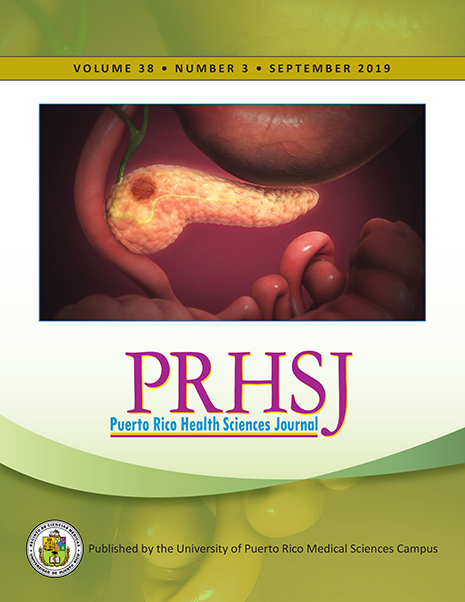Abstract
Objective: Our study described the occurrence, assessment, prevention, and management practices of pain, agitation, and delirium (PAD) in four intensive care units (ICUs) from the Puerto Rico Medical Center and compared findings with the 2013 PAD guidelines. Methods: A descriptive study, with repeated bedside measures (two times a day/two times a week) of PAD and review of patient clinical records. Results: Eighty ICU patients (20 per ICU) were evaluated, (median 3 times [IQR, 2-7]). At least once during the assessment period, 57% percent of patients had significant pain and 34% had delirium. Moreover, 46% were deeply sedated, 17.5% had agitation, and 52.5% of patients were within the recommended Richmond Agitation-Sedation Scale (RASS) scores. The Numeric Rating Scale and RASS were the most common tools used by clinicians to evaluate pain and agitation/sedation levels, respectively. Clinicians did not assess pain in patients unable to self-report with any guideline-recommended tools, as was the case for delirium. Fentanyl and morphine were the most commonly used analgesics, while benzodiazepines were used for sedation. Conclusion: Although pain, agitation, and delirium occurrence were similar to other studies, patients continue to suffer. A gap exists between clinical practices in these ICUs and current guidelines. Strategies that contribute to integrating guidelines into these ICUs should be developed, studied, and implemented.
Authors who publish with this journal agree to the following terms:
a. Authors retain copyright and grant the journal right of first publication with the work simultaneously licensed under a Creative Commons Attribution License that allows others to share the work with an acknowledgement of the work's authorship and initial publication in this journal.
b. Authors are able to enter into separate, additional contractual arrangements for the non-exclusive distribution of the journal's published version of the work (e.g., post it to an institutional repository or publish it in a book), with an acknowledgement of its initial publication in this journal.
c. Authors are permitted and encouraged to post their work online (e.g., in institutional repositories or on their website) prior to and during the submission process, as it can lead to productive exchanges, as well as earlier and greater citation of published work (See The Effect of Open Access).
